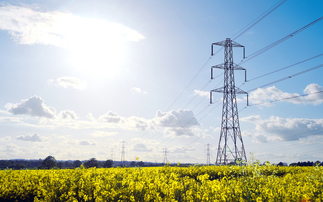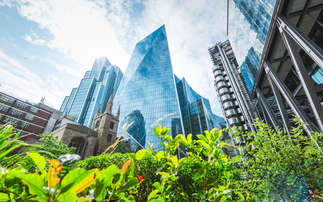More than $1tr a year could be raised through green bonds by 2020, but how should investors navigate this emerging market?
Finding the trillions of dollars required to scale up green technologies and climate adaptation measures is one of the biggest questions facing countries as they approach the crunch climate talks at the end of this year in Paris.
Rich countries have promised to mobilise $100bn a year by 2020 in climate finance for poor countries, and they remain well short of their target even though a number of key nations such as the UK, China and France have upped their funding pledges in recent weeks.
But the total amount of investment required for the climate mitigation and adaptation measures necessary to limit average global temperature increases to less than 2C far exceeds the internationally-agreed climate finance goal. More than $6tr annual investment is required for new low carbon infrastructure each year, according to The Global Commission on the Economy and Climate, while the UN's Environment Programme (UNEP) reckons a further $150bn a year needed by 2025 to help boost the climate resilience of existing infrastructure.
Countries have consistently argued there is no chance that all, or even most of this money will come from governments, so emerging financing models are slowly gathering pace to encourage the the private sector to step in and bridge the gap.
Green bonds are fast becoming one of the most popular mechanisms for allowing investors to directly back low carbon and climate change adaptation projects, with issuance expected to reach $60bn to $70bn this year. A recent report by the Climate Bonds Initiative, UNEP, and The World Bank predicted that with the right support in place, $1tr of green bonds could be issued a year by 2020, plugging a large chunk of the climate finance gap.
But the nascent market still faces a number of challenges, with investors unsure about what they should be looking for when investing in green bonds.
BusinessGreen has spoken to a number of leading responsible investors to help guide those interested in joining the green bond market.
What is a green bond?
So what exactly is a green bond and how do you know if you are investing in one? At their simplest, it is a "climate themed" bond - an IOU from a government, bank or institution looking to raise money to invest in climate-related projects.
But as the market has grown attempts have been made to set standards and help investors be sure their money really is helping to tackle climate change.
The Climate Bonds Initiative has a certified green bond scheme that is designed to make it easier for pension trustees and smaller investors to choose investment products wisely.
These officially labelled green bonds try to guarantee the proceeds will directly pay for a low carbon infrastructure or climate adaptation projects, such as renewable energy development or flood resilience measures.
The officially labelled green bond market stood at $66bn this summer and is growing at a rapid rate, but it remains relatively small compared to the unofficial climate-aligned bond market which is worth $532bn a year.
The standard is a good starting point and brings some certainty for investors, but many people may have more questions.
For example, some investors may feel uncomfortable about an oil giant issuing a green bond that promises to invest in solar panels. They may deem it hypocritical for a company that makes the vast majority of its profits from contributing to climate change to now be seeking to raise money for low carbon alternatives.
Similarly, a company which is broadly considered green in its activities does not automatically qualify for the label when it issues bonds - they have to prove the money will be funding climate measures.
Investors remain split on these issues. For example, Manuel Lewin, head of responsible investment at Zurich, says it is crucial for these more controversial companies to issue green bonds as a way of helping to raise awareness of the emerging market. "If the green market was only the green poster children and only the window solar companies would issue green bonds, I don't think it would make a big difference," he warns. "The very fact that green bonds can be appealing to banks and oil companies - that's what really makes a difference."
He argues the green bonds market needs to find a way to welcome low bonds from high carbon companies. "We would like to see more companies come to market - those companies that are a bit more controversial and where you need to think a little bit harder about whether we're going to be comfortable with that," he says. "But the market needs that, I think this is a good thing."









